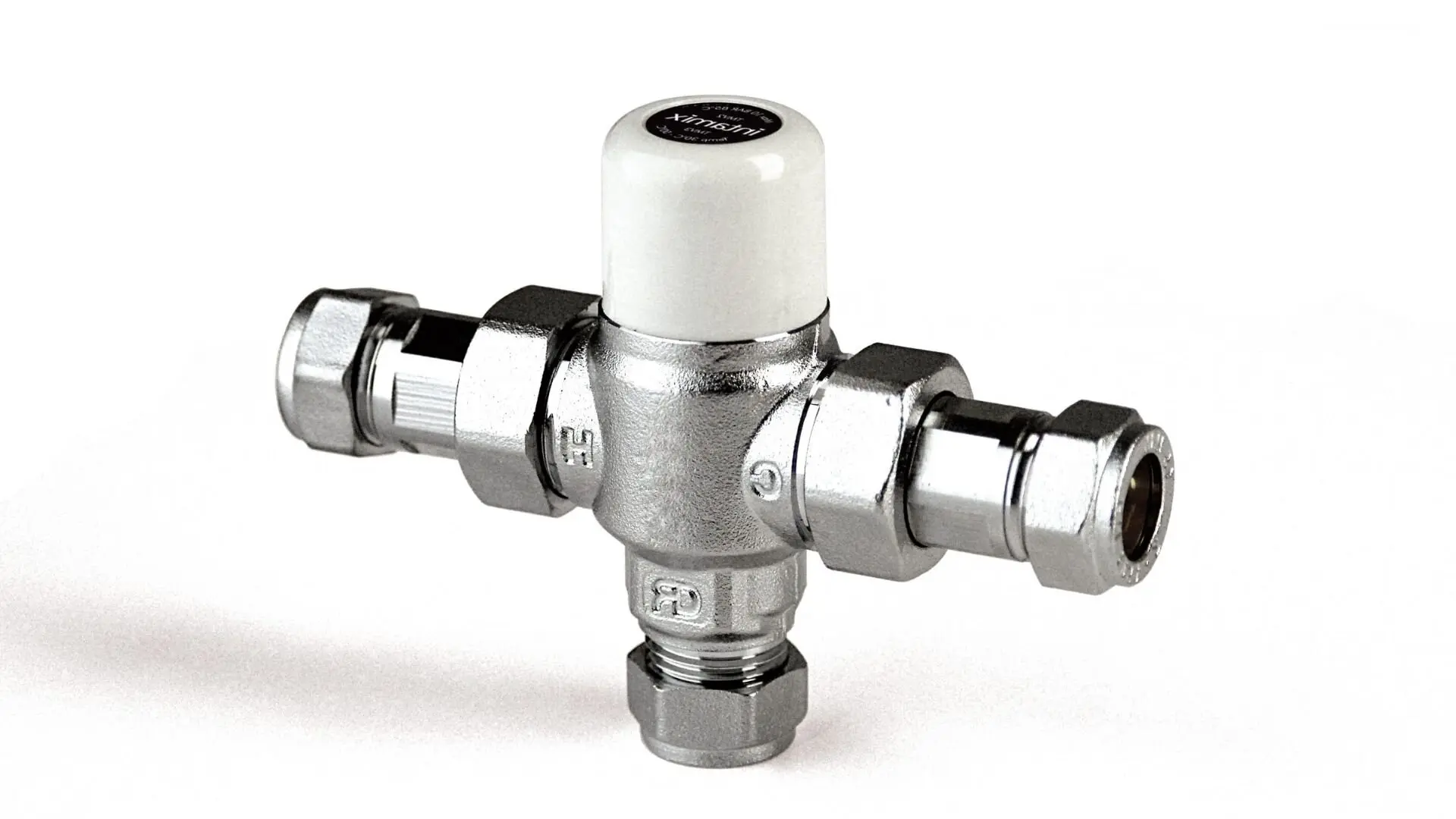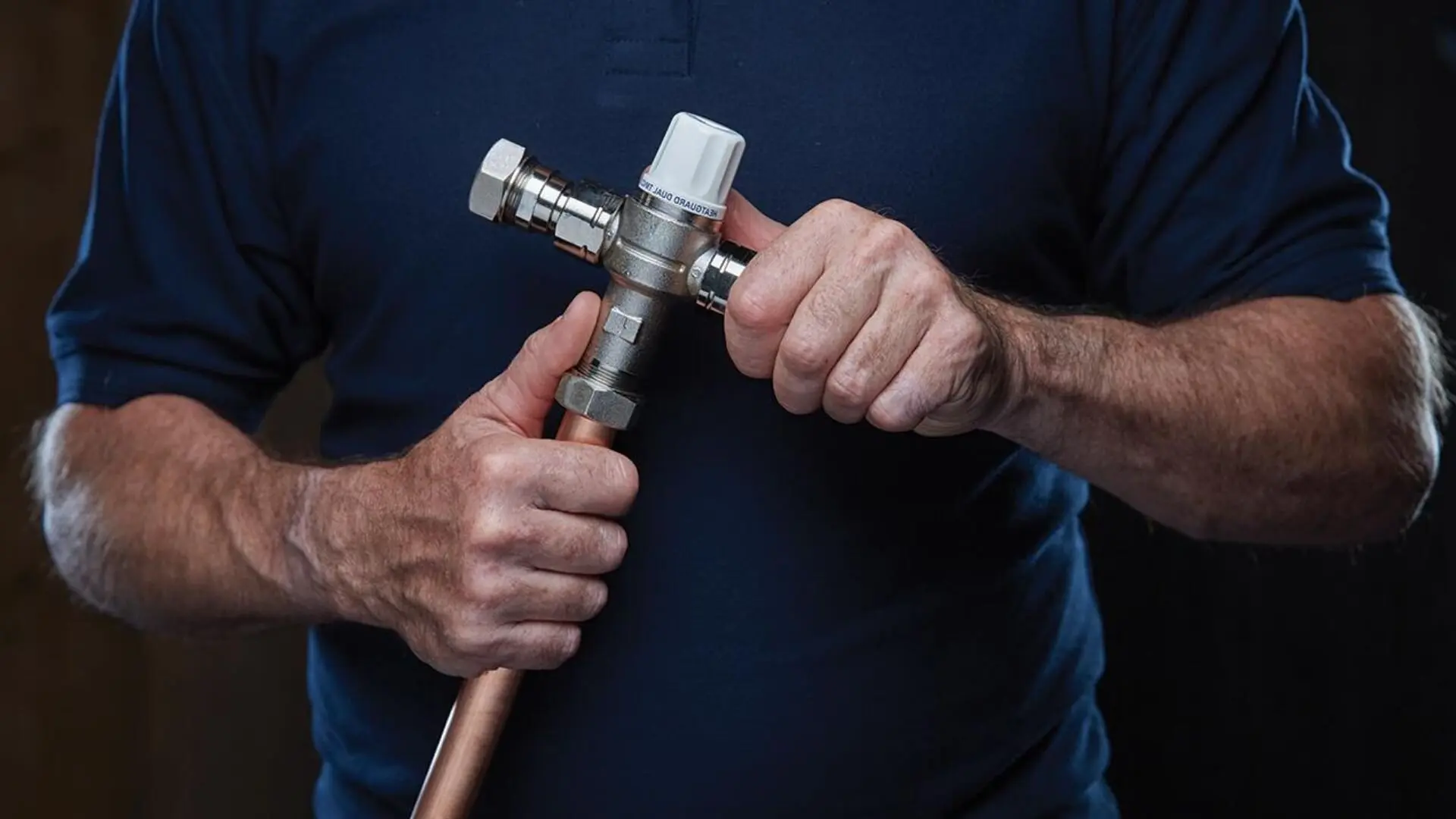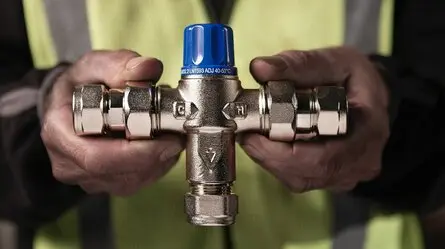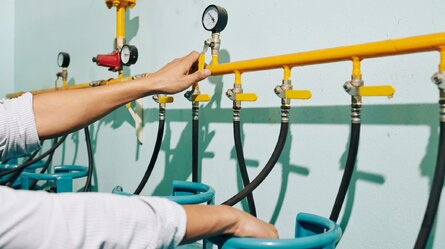A thermostatic mixing valve (TMV) plays a vital role in your plumbing system by controlling water temperature and preventing scalding. Regular upkeep is crucial to ensure your TMV functions properly over the years.
Ignoring your thermostatic mixing valve can cause various issues, like unpredictable temperature changes or total valve failure. Regular inspections and part replacements help you steer clear of costly repairs in the future.
This article will provide DIY tips for keeping your thermostatic mixing valve in optimal condition so that you can continue enjoying consistent and safe temperatures in your home.
Why TMV Maintenance Matters
Proper thermostatic mixing valve maintenance is critical for ensuring safe and consistent water temperatures in your home. Over time, normal wear and tear can cause a TMV to malfunction.

When the valve fails, you might suddenly get scalding hot or icy cold water. Even small temperature changes can be risky. Regular check-ups allow you to spot and change worn TMV parts before they cause trouble.
Mineral deposits, sediment build-up, and general use wear out the valves and impede proper functioning. Regular maintenance extends the life of your TMV for years of reliable performance. Making TMV care a priority safeguards your plumbing system from issues and your family from potential harm.
How to Maintain a Thermostatic Mixing Valve
Proper ongoing maintenance is crucial for keeping your thermostatic mixing valve functioning safely and efficiently for years to come. Follow these key maintenance tips for maintaining optimal TMV performance and safety:

Inspect Annually
At a minimum, inspect your thermostatic mixing valve once per year for signs of wear, damage, or issues. Look for leaks from the valve, abnormal noises when the valve is operating, loose valve components, damage to the valve body, and any other discernable problems.
Also, inspect the valve strainers and filters and clean out any built-up sediment or mineral deposits so debris does not impede valve operation. A thorough annual inspection allows you to catch minor problems before they become significant.
Lubricate the Valve Regularly
The thermostatic mixing valve’s internal components and moving parts should be lubricated regularly as directed in the manufacturer’s instructions. This is typically done by applying some plumber’s grease or silicone lubricant to the valve stem, cartridge, and o-rings. Properly lubricating the internal valve components ensures they continue to move and function smoothly without seizing up over years of use. Lubrication also prevents unnecessary wear and damage.
Check Water Temperatures
Use a digital thermometer now and then to check the hot water temperature from your thermostatic mixing valve. Test it at different times of the day and throughout the year. The readings should always stay within the safe range set by your local plumbing codes.
Any fluctuations in temperature could indicate an issue with the valve functioning correctly. Also, check the water temperature after any adjustments to the valve setting.

Replace Cartridges and O-rings
Over time, the internal cartridges or o-rings in your thermostatic mixing valve will wear out and need replacing. Stick to the manufacturer’s timeline for replacements. Swapping out worn parts keeps the valve mixing hot and cold water accurately. Ignoring this can lead to inconsistent temperatures and possible failures.
Test Safety Functions
Thermostatic mixing valves have built-in safety features, such as automatic shutting if the hot water temperature or hot water outlets exiting the valve become dangerously high. The flow will also be shut down if a hot water supply fails to prevent thermal shock.
Follow the manufacturer’s directions to test that all of the valve’s safety mechanisms are engaging appropriately. If any failures occur in the safety tests, replacement of components may be necessary. Confirming the proper operation of the safety functions helps avoid risks of scalding or other water temperature issues.
Maintain Safety with Proper TMV Care
Maintaining the appropriate water quality Australian standard and flow rates with regular cleaning, descaling and disinfection of the TMV valve components. Proper maintenance is crucial to keeping your thermostatic mixing valve safe for years. Follow the tips provided in this article, like annually inspecting, lubricating, and replacing TMV components as needed.
Catching minor issues early prevents expensive repairs down the road. For additional guidance on maintaining your TMV or any other plumbing repairs, contact the professionals at Woolf Plumbing.
Our licensed plumbers are experienced in inspecting, troubleshooting, and servicing thermostatic mixing valves. We’re always ready to answer any TMV maintenance questions you might have.
Give us a call or visit our website to learn more about our plumbing services. Investing a little time into regular TMV care ensures your valve operates safely for years.
TMV Maintenance FAQs
What is a TMV, and why is regular maintenance important?
A thermostatic mixing valve (TMV) blends hot and cold water to deliver water at a safe, preset temperature. Proper maintenance ensures it’s working correctly to prevent scalding or burns from temperature fluctuations. Regular checks reduce the risk of non-compliance with regulatory requirements.
How often should I service my TMV?
Most experts recommend annual TMV servicing to comply with regulations. Depending on usage conditions and water quality, some may need servicing every six months. Following the manufacturer’s guidelines protects you and your customers from temperature changes.
What does a typical TMV service involve?
A qualified technician will inspect for any signs of wear, damage, or tampering. They’ll disassemble and thoroughly clean the valve interior before checking temperatures meet requirements. Any necessary repairs or replacement parts will be installed to ensure precise temperature control.
What if my TMV is past the service due date?
If it’s been longer than recommended between services, have your TMV inspected immediately. In some areas, late maintenance can result in penalties for non-compliance with safety regulations. It’s always better to catch any issues early before temperature control is compromised. Staying on top of servicing is vital for safe hot water delivery.




